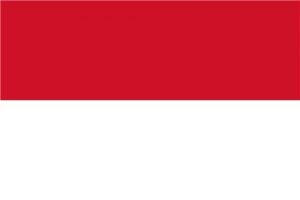Difference between revisions of "Language/Javanese/Grammar/Descriptive-Adjectives"
m (Quick edit) |
m (Quick edit) |
||
| Line 85: | Line 85: | ||
* [[Language/Javanese/Grammar/Conditional-Mood|Conditional Mood]] | * [[Language/Javanese/Grammar/Conditional-Mood|Conditional Mood]] | ||
* [[Language/Javanese/Grammar/Questions|Questions]] | * [[Language/Javanese/Grammar/Questions|Questions]] | ||
<span class='maj'></span> | |||
==Sources== | |||
* [https://www.jstor.org/stable/27865621 Describing Character in Javanese: Three Grammatical Categories] | |||
* [https://muse.jhu.edu/article/191119 Javanese Grammar for Students (review) - Project MUSE] | |||
{{Javanese-Page-Bottom}} | {{Javanese-Page-Bottom}} | ||
Revision as of 22:19, 22 March 2023
Javanese descriptive adjectives are used to describe the qualities of nouns, such as size, color, and shape. In this lesson, you will learn how to use descriptive adjectives in Javanese sentences.
Formation of Descriptive Adjectives
Javanese descriptive adjectives are formed by adding the suffix '-an' or '-en' to a noun or a verb stem. For example,
- Besar (big) becomes besaran or besaren (big size)
- Putih (white) becomes putihan or putihen (whiteness)
- Gede (large) becomes gedhen or gedhenen (largeness)
Note that the suffix '-an' or '-en' is used differently depending on the initial sound of the noun. If the initial sound is a vowel, '-an' is used. If the initial sound is a consonant, '-en' is used.
Usage of Descriptive Adjectives
In Javanese, the descriptive adjective follows the noun it modifies. For example,
- Witing tresna jalaran saka kulinaresmi (True love stems from purity)
In this sentence, 'kulinaresmi' (purity) is modified by 'tresna' (true love). The descriptive adjective 'kulinaresmi' follows the noun it modifies.
Here are some more examples:
| Javanese | Pronunciation | English |
|---|---|---|
| Tembung anane gede. | tɛmbʊŋ ananɛ gedɛ] | The tree is large. |
| Wadon anane ngetan. | wadɔn ananɛ ŋɛtan] | The woman is beautiful. |
| Buku iki pancen apik. | bʊku iki pantʃɛn apik] | This book is really good. |
| Latar putihan iki apik. | latar putihan iki apik] | This white background is good. |
Comparison of Adjectives
Javanese comparison of adjectives is formed by adding the word 'luwih' or 'lèbih' (more) before the adjective to indicate a comparative degree. To indicate the superlative degree, the word 'paling' (the most) is added before the adjective. For example,
- Laras iki luwih apik saka laras liyané (This shirt is more beautiful than the other shirt)
- Laras iki paling apik ing kene (This shirt is the most beautiful here)
Exercises
Translate the following sentences into Javanese.
- This apple is red.
- My cat is fat.
- The sky is blue.
- Her hair is black.
Conclusion
In this lesson, you have learned how to use Javanese descriptive adjectives to describe the qualities of nouns. You have also learned how to compare adjectives in Javanese. Keep practicing and you will be able to form Javanese sentences with ease!
Related Lessons
- Subject Verb Object
- Negation
- Personal Pronouns
- Past Tense
- Adverbs of Manner
- Gender
- Future Tense
- Conditional Mood
- Questions
Sources
- Describing Character in Javanese: Three Grammatical Categories
- Javanese Grammar for Students (review) - Project MUSE
